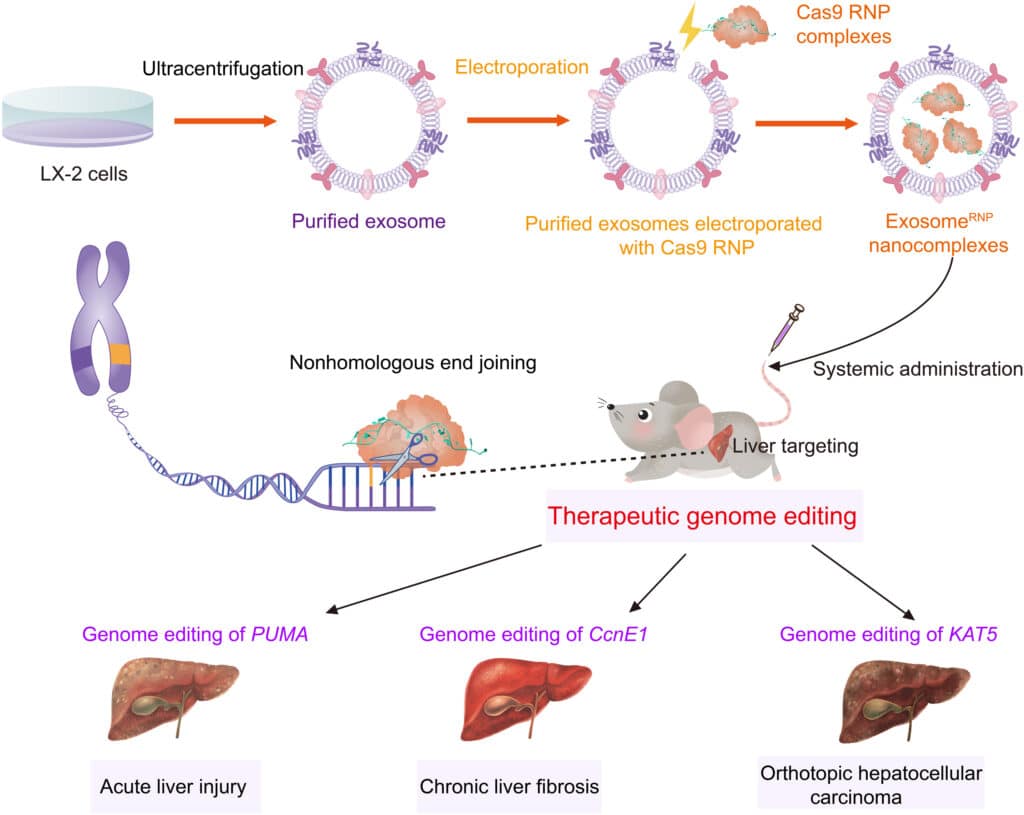CRISPR Cas9 Gene Editing Liver Diseases
Globally, liver diseases are the primary cause of death and disability. For certain patients, a liver transplant is the only available treatment, and many liver diseases have no known cure. A novel technique called CRISPR-Cas9 gene editing holds the potential to completely change how liver diseases are treated.
Table of Contents

What is gene editing using CRISPR-Cas9?
CRISPR Cas9 Gene Editing Liver Diseases
With the aid of CRISPR-Cas9 gene editing technology, scientists can precisely alter DNA. It functions by cutting DNA at a specific location with a protein called Cas9. Once the DNA has been cut, scientists can add, remove, or alter it.
How can liver diseases be treated with CRISPR-Cas9 gene editing?
CRISPR Cas9 Gene Editing Liver Diseases
By repairing the genetic alterations that cause the disease or by introducing new genes that may help shield the liver from harm, CRISPR-Cas9 gene editing can be used to treat liver diseases.
CRISPR-Cas9 gene editing, for instance, could be utilized to:
CRISPR Cas9 Gene Editing Liver Diseases
Inhibit the hepatitis B virus (HBV) by causing damage to the HBV genome.
Resolve genetic mutations that predispose individuals to non-alcoholic fatty liver disease (NAFLD) in order to prevent the disease from developing.
Make the donor liver more suited to the recipient’s body to enhance the results of liver transplants.
Create novel therapies to address liver diseases that present treatment challenges for existing treatments.
What are the advantages of treating liver diseases with CRISPR-Cas9 gene editing?
Comparing CRISPR-Cas9 gene editing to existing liver disease treatments may yield several advantages.
CRISPR-Cas9 gene editing, for instance, could be utilized to:
CRISPR Cas9 Gene Editing Liver Diseases
- Cure hereditary liver diseases that are beyond treatment.
- Stop high-risk individuals from developing liver diseases.
- Boost the effectiveness of liver transplants.
- Create novel therapies to address liver diseases that present treatment challenges for existing treatments.
What obstacles must be overcome before liver diseases can be effectively treated with CRISPR-Cas9 gene editing?
CRISPR Cas9 Gene Editing Liver Diseases
Before CRISPR-Cas9 gene editing is widely applied to treat liver diseases, a number of issues need to be resolved as it is still a relatively new technology.
Among the difficulties are:
- ensuring the efficacy and safety of CRISPR-Cas9 gene editing.
- increasing patient access to CRISPR-Cas9 gene editing.
- addressing the moral issues raised by the CRISPR-Cas9 gene editing technique.
In summary CRISPR Cas9 Gene Editing Liver Diseases
A promising new tool for treating liver diseases is CRISPR-Cas9 gene editing. With more study and advancement, CRISPR-Cas9 has the potential to completely change how liver diseases are treated in the future.


